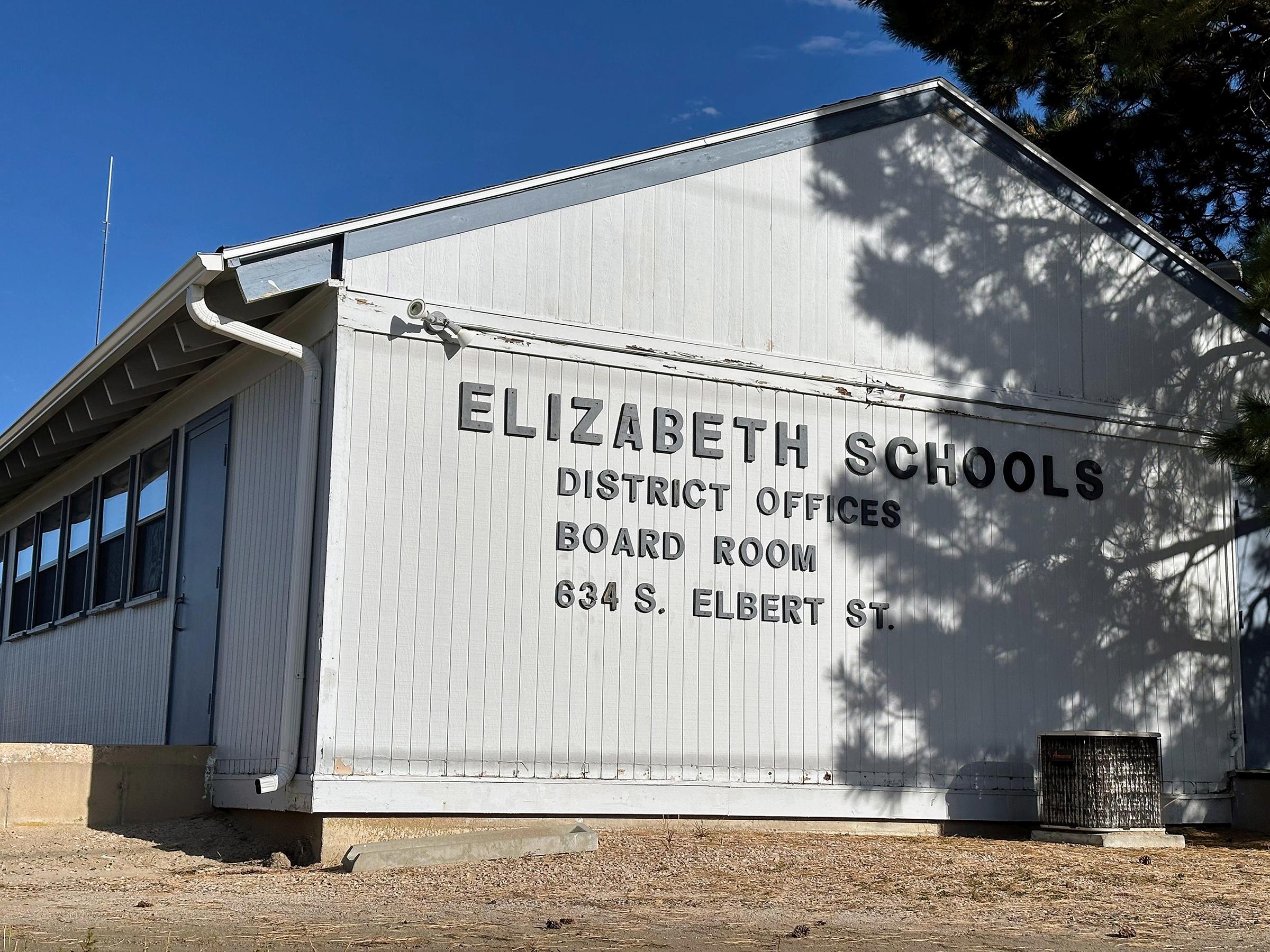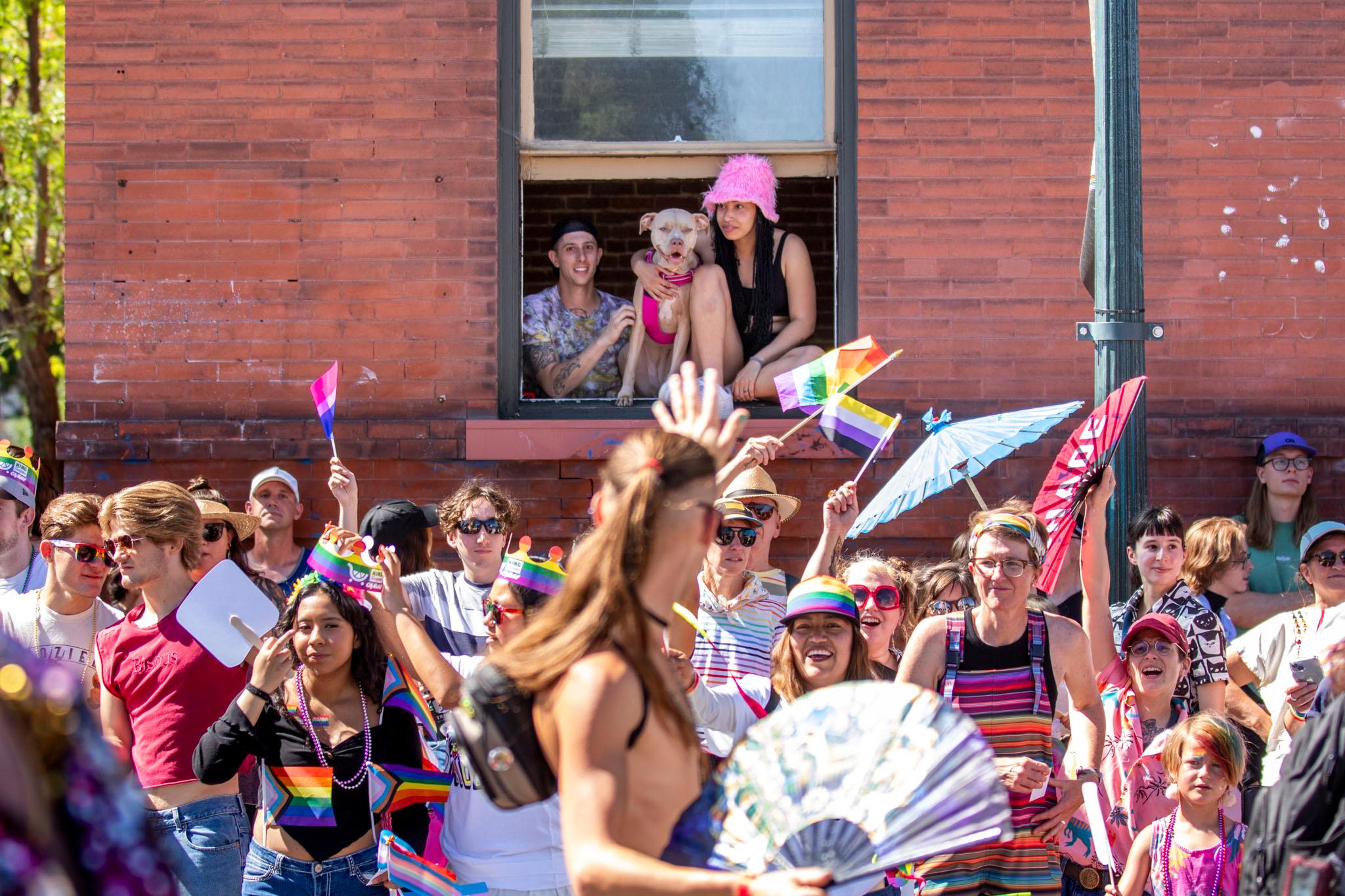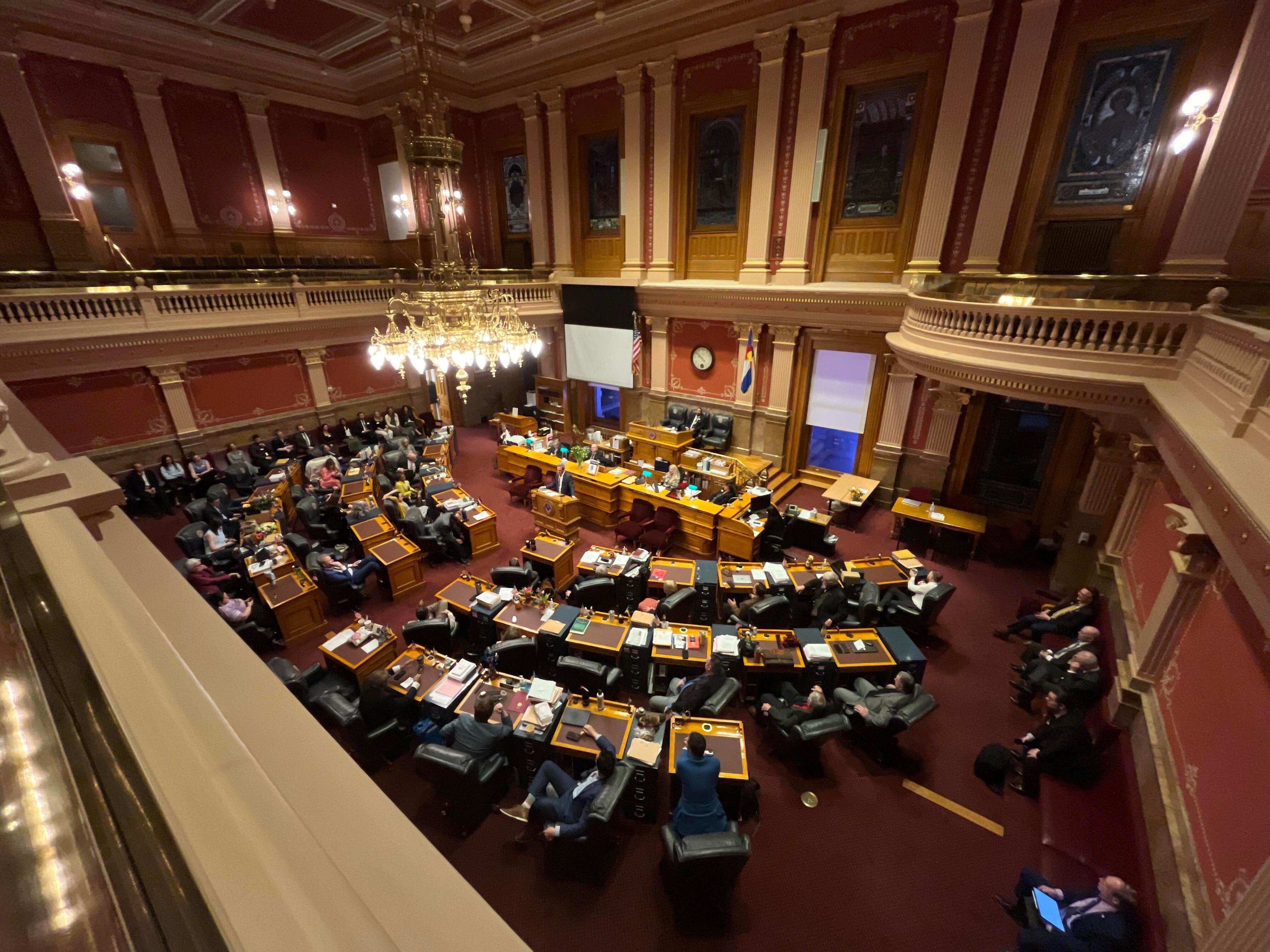
PlatteForum is in northwest Denver, blocks from several of the city's homeless shelters.
Brooklyn artist and writer Sarah Gerard is the art organization's artist-in-residence. She worked with teen artists from the Mi Casa after-school program at North High School to create PlatteForum's current exhibition, "Dear Mayor Hancock, What Are You Going to Do," which runs through Friday.
Gerard writes about homelessness often and says she was once homeless herself. She says she did not intend to use her artistic residency to focus on the issue, but it confronted her shortly after she arrived in Denver in early November.
"Just a couple of weeks after I got here, I think like a week-and-a-half or two weeks after I got here, the city began conducting these more frequent sweeps," Gerard says.
The sweeps were part of the city's controversial urban camping ban. City crews have cleared out homeless camps throughout Denver since March.
"We really believe as a city that people are better served when they are indoors,” Denver Human Services spokeswoman Julie Smith told CPR News last month. “We have an unsafe and unsanitary situation where people are sleeping on the sidewalk, they are eating on the sidewalk, in some cases, we are seeing human waste.”
- Nov. 15: Once Again, Denver's Homeless Are Cleared From 'The Last Block In Town'
- Oct. 12: Denver's Homeless In Court Call Sweeps A Constitutional Violation
North High School freshman Esther Cornish, one of the teen artists, says working on this exhibition made her want to get more involved in the homelessness issue.
"I definitely want to help more," Cornish says. "I thought that homelessness was a thing and there were people [who are homeless], but I didn't realize that a lot of camps were being broken apart. And that this is just where people live. This is their home."
Earlier this month, as Denver overnight temperatures dropped, the mayor announced an amendment to the urban camping ban. He said police would no longer seize tents and blankets that belong to people who are homeless during cold weather.
“As a city, we have a responsibility and moral obligation to protect the lives of our residents,” Hancock said in a statement. “Every step we take is intended to connect people with safe and warm places and critical supportive services. We never intended to take the belongings that people need to keep warm."

'Artifacts from the streets'
In the middle of the gallery stands an art installation that Gerard describes as a "sculpture consisting of former encampment materials."
Gerard says she and Rebecca Vaughan, PlatteForum's artistic and programming director, drove around the city collecting items like sleeping bags, tents, cardboard, tarps and police tape.
"We had a lot of discussions about how we felt uncomfortable when we were looking around for these materials," Vaughan says. "Not because we were venturing into any sort of unknown territory, but because we worried maybe we were tinkering with someone's existing camp. If we had a feeling that it was an active encampment, we left it alone"
But the sweeps are not the sole focus of the exhibition.
"A lot of what I hoped to showcase in doing this is the complexity of the issue," Gerard says. "There's a lot more to talk about surrounding homelessness than criminalizing laws. And certainly I know the city is doing a lot already to help its un-housed citizens. But the questions remains, what more [is] to be done."
Denver Day Works is one the new programs the city has launched to help its homeless population. The initiative provides same-day work opportunities with city agencies in the hope it can lead to regular or long-term employment. Denver also offers mental and behavioral health services, as well as a number of other programs, to its residents without stable housing.

Portraits of homelessness
The exhibition also features video and audio interviews with people who have experienced homelessness.
Tenth-grade student Xanayia McKinney interviewed a woman who lives on the streets, a woman she already knew. She says that gave her a deeper understanding of the issue.
"It was a new experience," McKinney says. "I knew her, but I didn't know her on that level. And now I do."
Portraits line one gallery wall, each accompanied by a smartphone. The phones contain audio interviews. Patrick Balerio, 58, is one of the people who shared his story for the project.
In his interview, he tells two North High School students about what it's like to live on the streets.
"There's nothing worse," he says on the recording. "Cause I felt estranged from my family. That's one of the symptoms. Estranged from society, family, everything."
Days before the exhibition opened, Mayor Hancock dropped by PlatteForum to meet the young artists.








